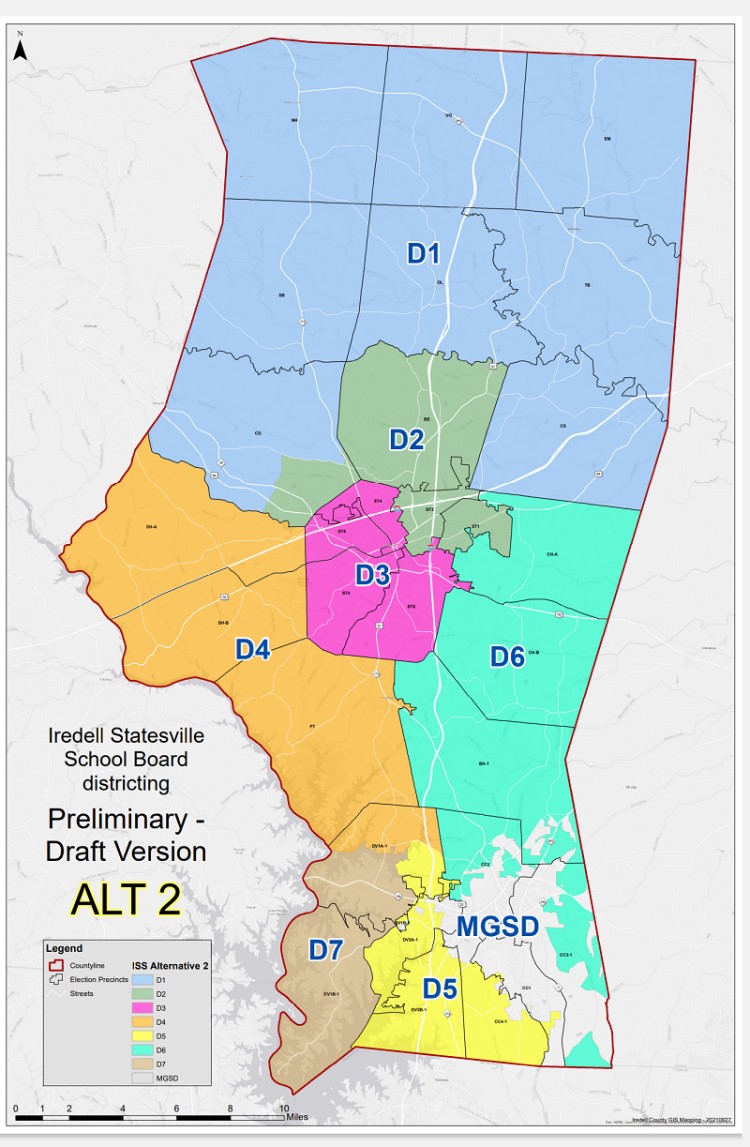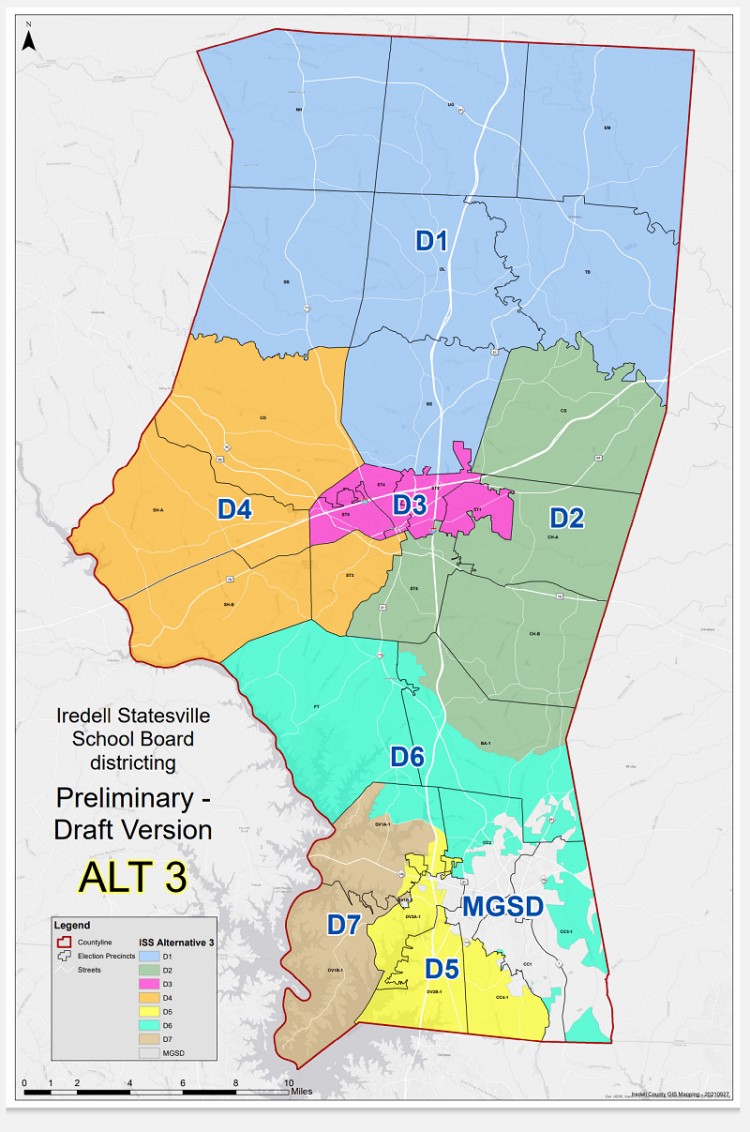
BY KARISSA MILLER
During a special meeting Monday, Iredell County residents had the chance to share their thoughts on two Iredell-Statesville Schools’ redistricting draft maps for electoral districts for Iredell-Statesville Schools Board of Education members.
Two individuals took advantage of that opportunity.
Jay Sherrill told the I-SS Board that he preferred Alternative 2 because it gives voters in one district the oportunity to elect a Democratic board member.
Sherill, who attended I-SS schools and graduated from Wake Forest University in 2020, told the board that he looked over the two draft maps and also researched the 2020 election results by precinct and then “laid it over the maps.”
“Several board members and myself have said things in the past wishing that school boards were still nonpartisan. I agree with that sentiment,” Sherrill said.
“I think that if you look at these maps it makes that rather impossible — based off the political leanings of the people in the districts and the ways that votes are allocated,” he added.
Alternative 2 allows for at least one district that is within three percentage points of either party, Sherrill said. The remaining districts have at least six percent more Republican voters and most of them are Republican by 30 or more percentage points, he added.
“I think for the sake of maintaining some sort of bipartisanship, some sort of lack of partisanship and the efforts that you take here and the people that you represent, especially in Statesville, which is where you would see that one competitive district, I would highly recommend going with Alternative No. 2,” Sherrill said.
He told the board that one seat on the board should be competitive.
Statesville NAACP Branch President Todd Scott said that he preferred Alternative 3. He told the board that he appreciates the fact that the mapmakers did not know or use the board’s addresses when drawing out the new maps.
“We wish everybody didn’t have a R (Republican) or D (Democrat) beside their name. First, we need to find somebody, but we need a minority or a woman on this board. We have all Republican men on this board and somehow we need to make that change,” Scott said.
He said that it’s important that “everybody gets a voice at the table in the community.”
Following the public hearing, board member Bryan Shoemaker thanked both speakers for coming to the meeting. Shoemaker expressed his disappointment that other community members weren’t there to discuss this important issue.
The board then discussed the options that they preferred with a majority of the board expressing a preference for Alternative 3.
“I like that Alternative 3 preserves that Statesville district,” said Vice Chairman Todd Carver.
“It’s unfortunate that the census was late. It was not our fault. They can use the excuse of Covid all they want. That forces us to hurry up. It forces our citizenry to hurry up,” said board member Bill Howell.
“I agree with both the gentlemen who spoke. Nothing is going to please everybody. It’s important that we keep communities together,” he added.
Chairman Martin Page said that he would like to see some minor adjustments to Alternative Map 3. However, a motion was made and passed by the board to leave Alternative 2 and Alternative 3 maps as they are.
The board is expected to adopt a resolution on which map they prefer during their October 11 meeting.
Background
The redistricting affects the districts for school board elections; it does not change where children go to school.
The board met at the beginning of September and by consensus asked a local redistricting service attorney group to adjust the maps using a clean slate approach.
It’s part of a required process to adjust district lines based on Census data. The board has repeatedly stated that they are on a tight timeline and that the 2020 Census data has put them behind on this process.
Voting districts in North Carolina are based on the “one person/one vote” principle that means each ward needs to be nearly equal in population.
According to the 2020 Census numbers, the data shows that the northern end of the county, or District 1, has lost 16.07 percent of its populations, while the fast-developing Troutman area has grown by 27.10 percent.
Proposed Maps





